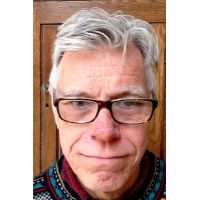
PHILLIP SCHEWE is a physicist and writer. A graduate of the University of Illinois, he received a PhD from Michigan State University for doing experimental particle physics. He also received at that time a bachelor’s degree in English and much of his professional career has been devoted to popularizing physics research. He spent 30 years working at the American Institute of Physics. His duties there included writing a weekly newsletter called Physics News Update. He also had responsibility for publicizing the journals and meetings of the American Physical Society. Then for five years he served as director of communications for the Joint Quantum Institute at the University of Maryland.
On the literary side, he was for many years a dramatist. Some of his plays have been performed in New York and Washington, DC. He is the author of two books: The Grid (published in 2007 by the Joseph Henry Press), a look at how society uses and loses electricity (and declared by NPR as one of the science books of the year); and Maverick Genius (published in 2013 by St. Martin’s Press), a biography of Freeman Dyson. He lives in Takoma Park, Maryland, where he conducts two book clubs. He is now at work on a novel

The three months I spent as KITP writer-in-residence were among the best of my entire science writing career. The most important things? Meeting so many scientists from diverse countries discussing interesting topics such as soft matter and the Large Hadron Collider. Soaking up the friendly but rigorous intellectual environment fostered by KITP was edifying. I attended many talks, most of which were (alas) too technical for me to follow in any detail; I took this in good spirit, however, since I knew the talks were, after all, aimed not at me but at other scientists seeking to broaden their own understanding. I nevertheless absorbed many interesting facts and concepts which I hope to use in my future writing. Example: in the human body about a million cell divisions occur every second. I was astonished to learn that we all change in this megahertz way.
It might seem strange for me to say that for the past few years I had stopped reading books about physics; maybe I had become jaded in my occupation of writing about physics and organizing physics press conferences. I came to KITP partly to reenergize my physics interest. This plan worked. I have started to read physics books again. From the UCSB and KITP libraries I found much nourishment in books like (KITP professor) Tony Zee’s “Fearful Symmetry” and Roger Penrose’s “The Road to Reality.”
An office at KITP, overlooking the Pacific Ocean, is an excellent place to clear the mind and plunge into something new. In my case this meant moving from writing non-fiction books about science to writing novels. This transition was strengthened by the effort I spent in preparing and delivering a series of colloquia devoted to the frontier area between science and general culture, especially literature. My cue in providing these talks was Lars Bildsten’s suggestion that the writer-in-residence program was meant, in part, to widen the visiting scholars’ perspective on the context of science within society.
I had friendly support from and creative encounters with the KITP director, the deputy directors, and several of the program organizers. Numerous coffee and cheese-and-wine events provided an ideal social setting for fostering new friends and new ideas.
One highlight for me was the creation of a “topological dress,” a woman’s dress made entirely from heptagons, hexagons, and pentagons. The moving forces behind this venture were Robin Selinger, a physicist, and Andrea Schewe, my wife and a top sewing pattern designer. So, at one moment during a convivial event in the KITP common room, about five or six people were sticking two-inch-wide paper shapes onto an actual dressform, the kind used in the fashion industry. The result: a prototype fully-tiled, fabric-efficient, garment expressing the best attributes of Euler’s formula for negative-curvature shapes. Non-Euclidean geometry meets glamour.
Having summarized the intellectual benefit of being at KITP, I must also recognize the magical topographic backdrop: Santa Barbara’s littoral, wedged between ocean and mountain, is paradise, meteorologically speaking. For the first time in my life not a single snowflake fell on my head. What California missed in rainfall I gained in terms of touristic pleasure. Considering its per-capita amenities, Santa Barbara is just the right size for a city.
I have recommended the KITP writer’s program to several of my journalist friends, and I wouldn’t mind coming back some day for a second-round residency myself.